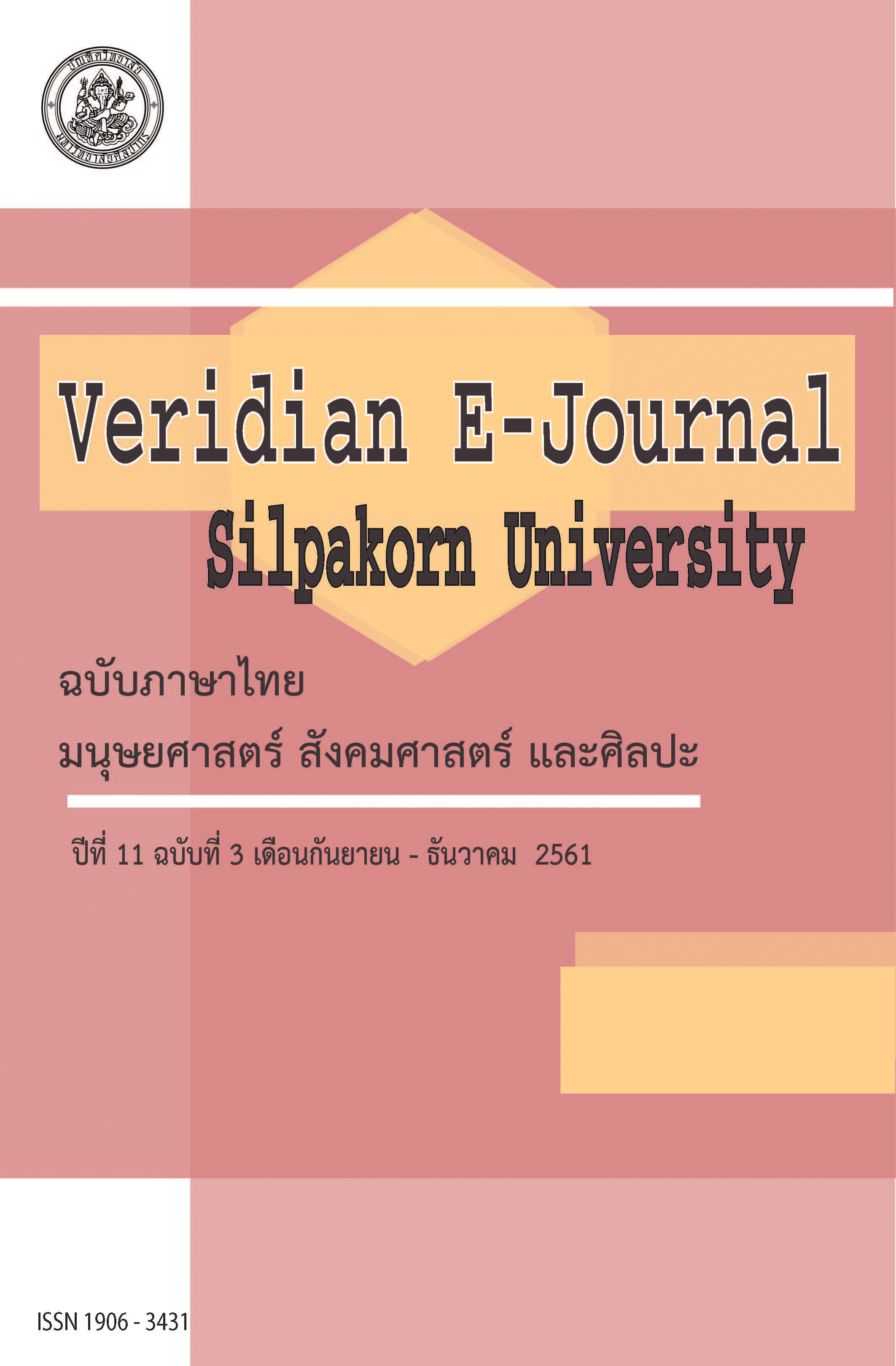การพัฒนาบทเรียนคอมพิวเตอร์ช่วยสอน เรื่อง การลับคมตัดมีดกลึง สำหรับนักศึกษา ชั้นปีที่ 1 ภาควิชาครุศาสตร์เครื่องกล คณะครุศาสตร์อุตสาหกรรม มหาวิทยาลัยเทคโนโลยีพระจอมเกล้าพระนครเหนือ (Developing Computer Assisted Instruction (CAI) on Sharpening Cutting Tool for First Year Students of Department of Teacher Training in Mechanical Engineering, Faculty of Technical Education, King Mongkut's University of Technology North Bangkok)
Main Article Content
Abstract
การวิจัยครั้งนี้มีวัตถุประสงค์เพื่อ คือ 1) พัฒนาและหาคุณภาพบทเรียนคอมพิวเตอร์ช่วยสอน เรื่อง การลับคมตัดมีดกลึง ของนักศึกษา 2) หาประสิทธิภาพของบทเรียนคอมพิวเตอร์ช่วยสอน เรื่อง การลับคมตัดมีดกลึง ของนักศึกษา และ3) เปรียบเทียบผลสัมฤทธิ์ทางการเรียน เรื่อง การลับคมตัดมีดกลึง ของนักศึกษา ก่อนเรียนและหลังเรียนด้วยบทเรียนคอมพิวเตอร์ช่วยสอน
กลุ่มตัวอย่างในการวิจัยครั้งนี้ คือ ผู้เชี่ยวชาญในการประเมินคุณภาพบทเรียนคอมพิวเตอร์ช่วยสอน และนักศึกษาระดับปริญญาตรี ชั้นปีที่ 1 ภาคเรียนที่ 2 ปีการศึกษา 2558 ภาควิชาครุศาสตร์เครื่องกล คณะครุศาสตร์อุตสาหกรรม มหาวิทยาลัยเทคโนโลยีพระจอมเกล้าพระนครเหนือ จำนวน 30 คน ได้มาโดยวิธีการสุ่มแบบกลุ่ม เครื่องมือที่ใช้ในการวิจัย คือ บทเรียนคอมพิวเตอร์ช่วยสอน แบบประเมินคุณภาพของบทเรียนคอมพิวเตอร์ช่วยสอน แบบวัดผลสัมฤทธิ์ทางการเรียนมีค่าความยากง่ายอยู่ระหว่าง 0.20-0.80 ค่าอำนาจจำแนกตั้งแต่ 0.29 ขึ้นไป และมีค่าความเชื่อมั่นเท่ากับ 0.79 สถิติที่ใช้ในการวิเคราะห์ข้อมูล คือ ค่าเฉลี่ย ส่วนเบี่ยงเบนมาตรฐาน ทดสอบค่าที (t-test for dependent samples)
ผลการวิจัยพบว่า 1) บทเรียนคอมพิวเตอร์ช่วยสอน เรื่อง การลับคมตัดมีดกลึง สำหรับนักศึกษา มีคุณภาพด้านเนื้อหา และด้านเทคนิคการผลิตสื่อ ภาพรวมอยู่ในระดับดี (=4.40, S.D.=0.34) 2) บทเรียนคอมพิวเตอร์ช่วยสอน เรื่อง การลับคมตัดมีดกลึง สำหรับนักศึกษา มีประสิทธิภาพเท่ากับ 83.50/81.67 เป็นไปตามสมมติฐานที่ตั้งไว้ และ3) ผลสัมฤทธิ์ทางการเรียน เรื่อง การลับคมตัดมีดกลึง ด้วยบทเรียนคอมพิวเตอร์ช่วยสอน ของนักศึกษา สูงกว่าก่อนเรียน อย่างมีนัยสำคัญทางสถิติที่ระดับ .05 เป็นไปตามสมมติฐานที่ตั้งไว้
The objectives of this research were 1) to develop and determine the quality of computer-assisted instruction on Sharpening Tool Lathe, 2) to determine the efficiency of computer-assisted instruction on Sharpening Tool Lathe, and 3) to compare academic achievement of students before and after learning computer-assisted instruction on Sharpening Tool Lathe.
The sample of this study was 30 CAI quality evaluation experts and 1st year students in the second semester in 2015, Department of Teacher Training in Mechanical Engineering, Faculty of Technical Education, King Mongkut's University of Technology North Bangkok . The samples were selected based on cluster sampling. The research instrument was computer-assisted instruction, CAI quality evaluation scale, and academic achievement scale with difficulty index ranged from 0.20 to 0.80 and discrimination index of 0.29 and over and reliability of 0.79. Data were analyzed by using statistics including mean, standard deviation, and t-test for dependent samples.
The results of this study showed that 1) computer-assisted instruction on Sharpening Tool Lathe had overall content quality and media production technique at a good level (=4.40, S.D.=0.34), 2) the efficiency of computer-assisted instruction on Sharpening Tool Lathe was 83.50/81.67 that met the set hypothesis, and 3) academic achievement of students taught by computer-assisted instruction on Sharpening Tool Lathe was higher than before with a statistical significance level of .05, accepting the set hypothesis.
